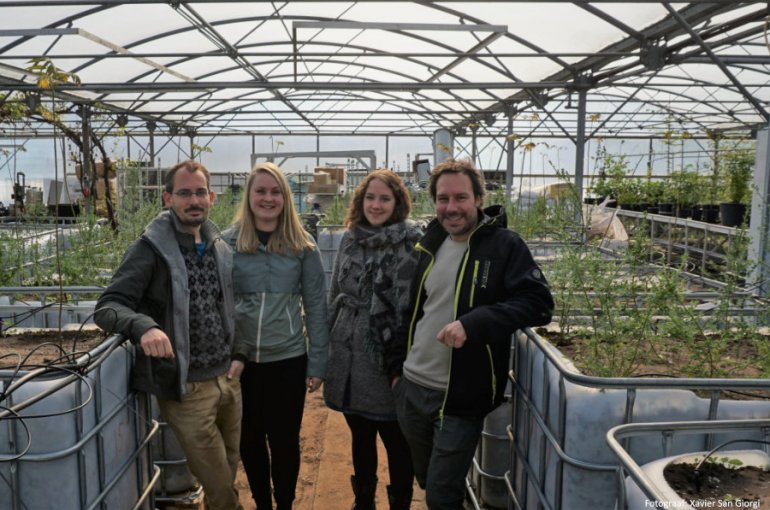Agroforestry project with Food Forestry Development

The ultimate goal in agroforestry is to grow a combination of plant species in order to produce more yield together than each species in monocultures. While we know from other systems such as grasslands that higher plant diversity leads to higher productivity, research in agroecosystems is still in its infancy. In collaboration with Xavier San Giorgi, Food Forestry Development, and Gerard van Buiten, Utrecht University's Botanical Garden, we investigate whether polyculture of plants can yield more than their constituent counterparts.
In collaboration with Food Forestry Development (Xavier San Giorgi), the Master's programme of Bio Inspired Innovation (BII, coordinated by Jaco Appelman), and Utrecht University's Botanical Garden (Gerard van Buiten), we established 28 mesocosms at Utrecht University's Botanical Garden with each of three levels of plant diversity: monocultures of each of three species, polycultures of two species, and polycultures of three species. Species selection was based on potential complementarity between the three species in terms of acquisition of nutrients and use of canopy space. In particular, we chose the tree species Toona sinensis, the nitrogen fixer bush Cytisus scoparius and the mineral accumulator ground cover Achillea millefolium. This study will not only bring the experimental evidence whether polycultures yield more biomass than monocultures in an agroforestry system, it will further allows us to understand the underlying mechanisms. The experiment was set up by Denise Groeneweg and Freddie Visschedijk, MSc students at Utrecht university under the daily supervision of Yann Hautier and co-supervision of Xavier San Giorgi.

